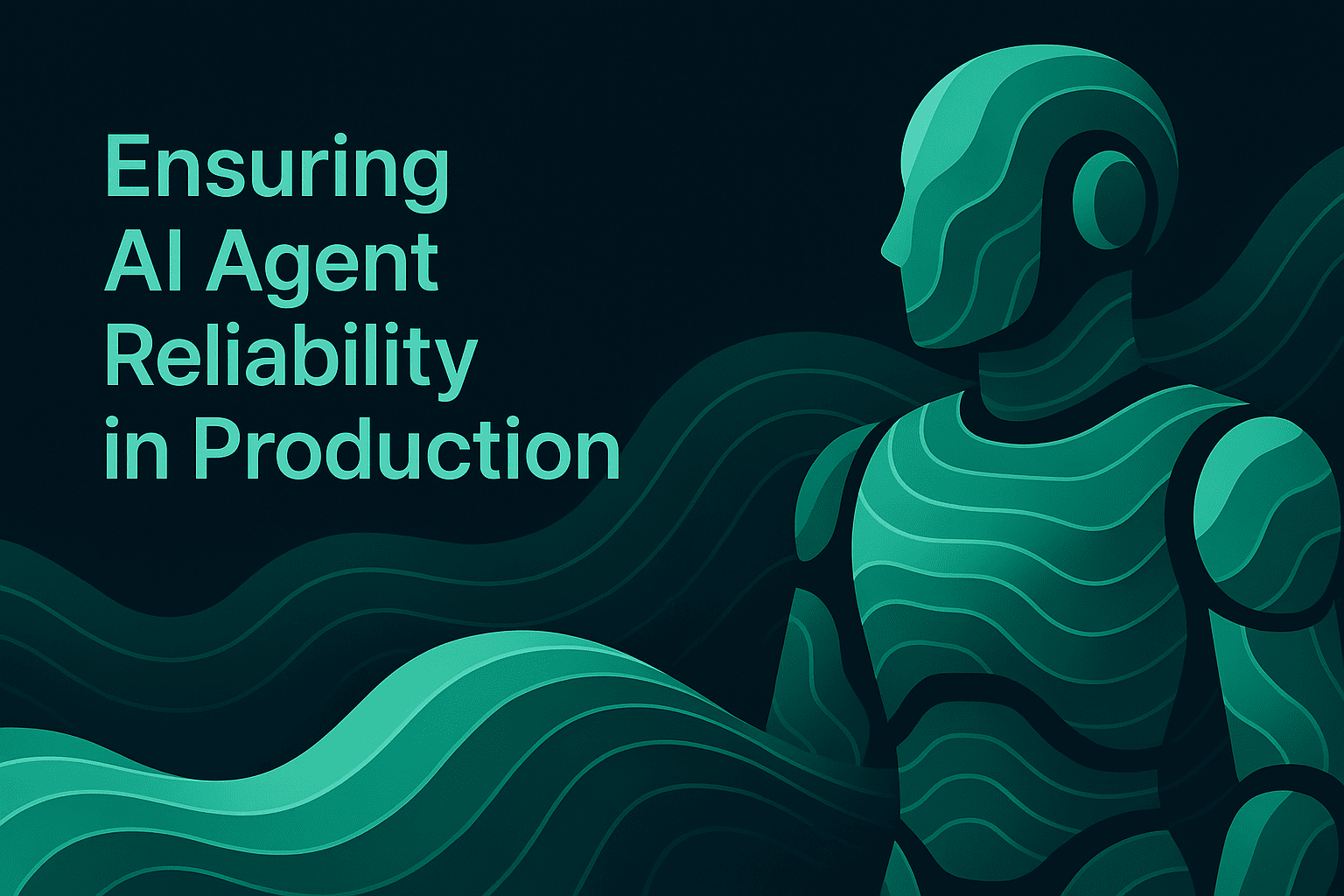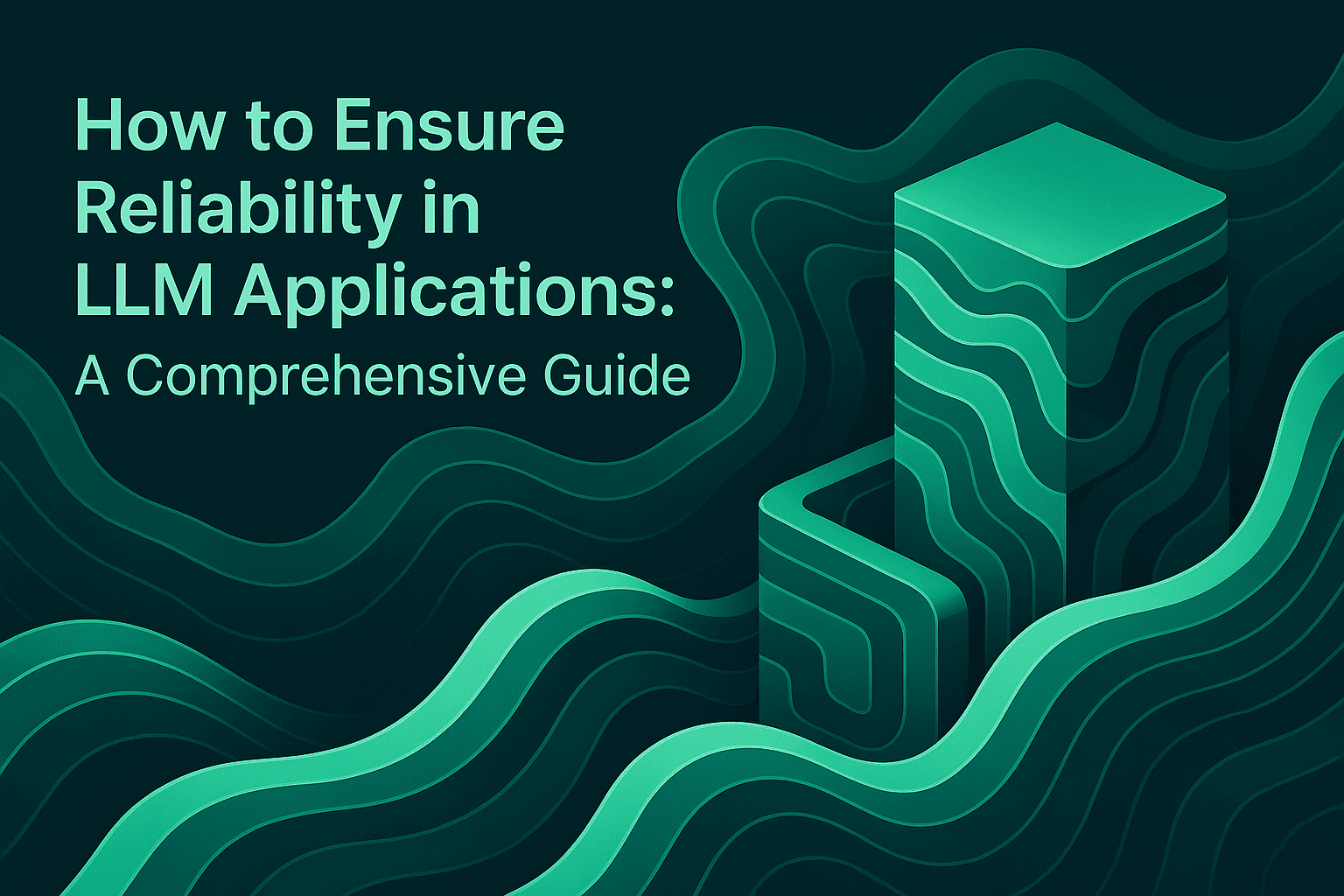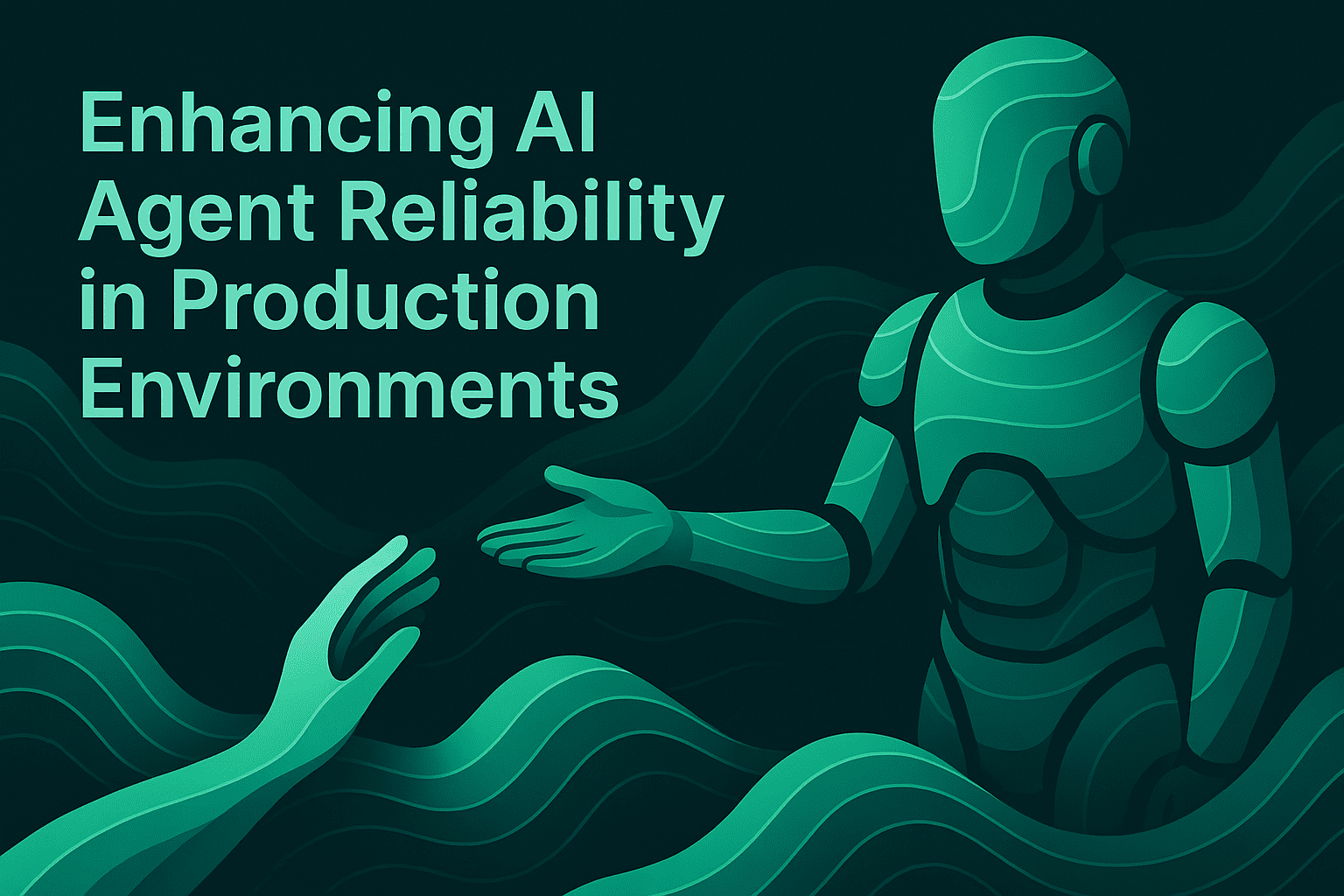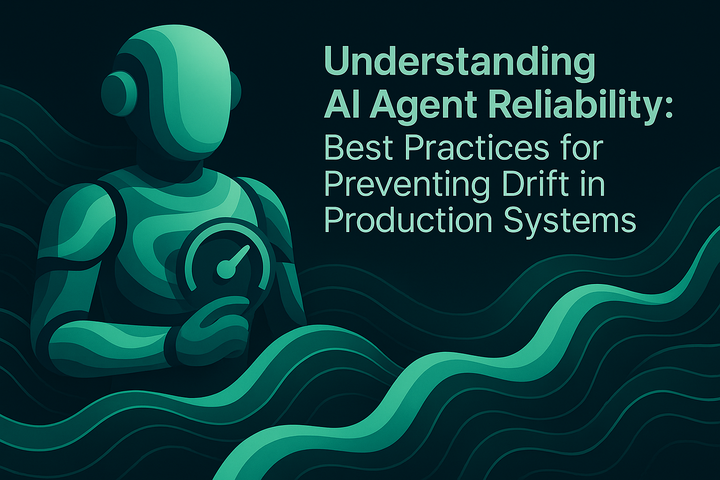Ensuring AI Agent Reliability in Production

AI agents are rapidly moving from experimental prototypes to production systems handling critical business processes. Research shows that even the best current AI agent solutions achieve goal completion rates below 55% when working with CRM systems, exposing a fundamental gap between demonstration capabilities and production reliability. Organizations deploying enterprise-wide AI agents must address systematic quality challenges before these systems can deliver the promised productivity gains.
This article examines the core reliability challenges facing production AI agents, the infrastructure required to ensure consistent performance, and practical strategies teams use to deploy agents that work reliably at scale.
The Production Reliability Gap
The transition from AI agent prototypes to production deployment reveals significant reliability challenges that surface only under real-world conditions. Evaluations using Hubspot CRM showed that the probability of successfully completing all six test tasks in 10 consecutive runs was merely 25%, demonstrating that inconsistent performance remains a critical barrier to widespread adoption.
Error rates compound exponentially in multi-step workflows. If each step in an agent workflow has 95% reliability, which is optimistic for current LLMs, then over 20 steps this yields only 36% success. This mathematical reality makes autonomous multi-step workflows fundamentally challenging at production scale, requiring teams to rethink how they architect agent systems.
The reliability gap stems from the non-deterministic nature of AI agents. Unlike traditional software where identical inputs produce identical outputs, agents can choose completely different approaches to solve the same problem. This variability creates entirely new categories of reliability risks that traditional software development practices fail to address.
Core Reliability Challenges for Production AI Agents
Hallucinations and Factual Accuracy
Generative models often produce outputs that are syntactically fluent but factually wrong. These hallucinations can misinform decision-makers, creating business risk when agents make autonomous decisions based on incorrect information. Production AI agents require systematic approaches to ground responses in verifiable data sources and validate outputs before they affect downstream systems.
Agent evaluation frameworks must assess not only whether agents complete tasks but whether they do so accurately. Teams need deterministic rules, statistical measures, and LLM-as-a-judge techniques to quantify factual accuracy across different types of agent outputs.
Multi-Step Workflow Failures
When agents select suboptimal tools early in a workflow, every subsequent action operates on flawed foundations. Cascading failures amplify initial errors through multi-step reasoning chains, making it critical to validate agent decisions at each stage rather than only evaluating final outputs.
Production systems require comprehensive agent tracing that captures the full reasoning process. Teams must understand not just what agents decided but why they made specific choices, enabling root cause analysis when workflows fail.
Orchestration Complexity
Each additional agent introduces new communication pathways, potential conflict scenarios, and coordination requirements that must function flawlessly under production stress. Multi-agent systems multiply complexity exponentially, requiring specialized coordination frameworks and inter-agent communication protocols.
Effective agent monitoring becomes essential for multi-agent architectures. Teams need visibility into how agents communicate, which decisions trigger downstream actions, and where coordination breaks down under load.
Termination and Control Issues
In production environments, agents often become trapped in loops, repeatedly attempting failed operations, or continue to process tasks that have already been completed successfully. These scenarios waste computational resources while potentially corrupting data through duplicate or conflicting operations.
Production-ready agents require well-defined termination conditions and graceful degradation strategies. Systems must detect when agents enter problematic states and intervene before resource exhaustion or data corruption occurs.
Context and Memory Limitations
Most current agents struggle with maintaining context across long conversations or complex multi-day tasks. While vector databases help with long-term memory, efficiently managing and retrieving relevant context at the right time remains an unsolved problem for many production applications.
Context management directly impacts both agent reliability and operational costs. Long conversations create quadratic token costs that become prohibitively expensive at scale, requiring teams to balance context retention with performance and cost constraints.
Building Reliable AI Agent Infrastructure
Organizations succeeding with production AI agents invest in specialized infrastructure that addresses the unique challenges of non-deterministic systems. Traditional application monitoring and testing tools lack the semantic understanding necessary to assess agent quality, requiring purpose-built platforms for AI reliability.
Comprehensive Agent Evaluation
Production readiness requires systematic agent evaluation across multiple dimensions: task completion accuracy, reasoning quality, tool usage appropriateness, and conversational coherence. Teams must assess both individual agent actions and end-to-end workflow outcomes.
Effective evaluation combines multiple techniques:
- Deterministic rules for validating specific behaviors and constraints
- Statistical measures for quantifying performance across large test suites
- LLM-as-a-judge techniques for assessing subjective qualities like helpfulness and tone
- Human evaluation for nuanced behaviors and alignment with user preferences
Maxim's evaluation framework enables teams to measure agent quality at session, trace, and span levels, providing the granularity needed to diagnose specific failure modes while tracking overall system reliability.
Agent Simulation for Production Readiness
Deploying AI agents into production without rigorous testing is a recipe for unexpected failures and costly rollbacks. Agent simulation allows teams to test agents across hundreds of scenarios and user personas before production deployment.
Simulation frameworks generate synthetic conversations that exercise agent capabilities, exposing failure modes and edge cases that might not surface during limited manual testing. Advanced simulation systems can replay and modify historical interactions, allowing teams to test how agent changes would have performed on past traffic without requiring live user exposure.
Simulation supports both functional testing and resilience engineering. Teams can stress-test agent orchestration logic, verify failover mechanisms, and validate that agents degrade gracefully under adverse conditions such as API failures or unexpected user inputs.
Production Observability and Monitoring
Production AI agents require comprehensive agent observability to understand their behavior in real-world conditions. Unlike deterministic software, agents make probabilistic decisions that vary based on context, making runtime monitoring essential for maintaining reliability.
Effective observability captures detailed traces of agent reasoning processes, tool invocations, and decision paths. This visibility enables teams to debug failures, identify performance bottlenecks, and detect quality regressions before they impact users at scale. Distributed tracing becomes particularly important for multi-agent systems where understanding inter-agent communication patterns is necessary to diagnose issues.
Production monitoring must balance detailed instrumentation with performance overhead. High-throughput agent applications require efficient logging and sampling strategies that capture sufficient information for debugging without degrading user experience.
Experimentation and Iteration
Rapid iteration requires robust experimentation frameworks that enable teams to test different prompts, reasoning strategies, and tool configurations systematically. A/B testing and gradual rollouts allow teams to validate improvements before full deployment, reducing the risk of quality regressions.
Maxim's Playground++ enables prompt versioning, deployment without code changes, and side-by-side comparison of output quality, cost, and latency across different configurations. This infrastructure accelerates the iteration cycle from weeks to days.
Practical Strategies for Production Deployment
Companies dive in headfirst, trying to build agents that can plan, reason, and bring them coffee, only to end up with bloated, overcomplicated systems that deliver mediocre results. Teams succeeding with production agents follow several key practices that balance ambition with practical constraints.
Start with Constrained, Domain-Specific Agents
The winners will be teams building constrained, domain-specific tools that use AI for the hard parts while maintaining human control or strict boundaries over critical decisions. Rather than pursuing fully autonomous agents, successful teams focus on well-defined tasks where current capabilities can deliver reliable value.
For most enterprises, starting with low- to medium-complexity use cases with tasks that are repetitive in nature but require human intervention for domain knowledge is recommended. This approach allows teams to learn, iterate, and build trust while minimizing risk.
Implement Quality Gates and Guardrails
Production-ready agents require systematic quality checks throughout the development lifecycle. Automated evaluations should run on every agent modification, with human review for critical changes affecting user-facing behavior. Agent debugging tools must provide rapid feedback when quality issues surface.
Guardrails prevent harmful behaviors while preserving agent flexibility. Teams must define appropriate automation boundaries and handoff protocols, ensuring that agents escalate to human oversight when encountering situations outside their reliable operating parameters.
Establish Continuous Learning Loops
Agent performance should improve over time through analysis of production interactions. Teams must establish feedback loops that identify failure patterns, curate training data, and refine agent capabilities based on real usage. High-quality, relevant, and timely data is important for any intelligent system.
Maxim's data engine enables continuous dataset curation from production logs, human feedback collection, and data enrichment workflows. This infrastructure ensures that evaluation datasets evolve alongside agent capabilities.
Manage Costs and Performance
Running sophisticated AI agents requires significant computational resources, especially for complex reasoning tasks. Teams need visibility into agent token usage patterns and strategies to optimize costs without sacrificing quality.
Cost management requires monitoring at multiple levels: individual LLM calls, tool invocations, and complete agent workflows. Teams must balance model selection, caching strategies, and workflow complexity against performance and cost constraints.
Addressing Security and Governance
Autonomous agents that can access external systems and APIs introduce new security risks. They may be vulnerable to prompt injection attacks, unauthorized access to sensitive data, or manipulation by malicious actors who understand how to exploit their reasoning patterns.
Production AI agent deployments require robust security frameworks that extend beyond traditional application security. Teams must implement authentication and authorization controls, validate agent actions against business rules, and maintain audit trails for compliance requirements.
The concept of agent infrastructure involves external technical systems and shared protocols designed to mediate and influence agent interactions within their environment. Governance frameworks must reliably link actions to specific agents and the real-world entities responsible for them, enabling accountability when agents make consequential decisions.
The Path to Production Reliability
Early enterprise deployments of AI agents have yielded up to 50 percent efficiency improvements in functions like customer service, sales and HR operations. Achieving these benefits requires systematic investment in agent quality infrastructure rather than hoping reliability emerges from improved foundation models alone.
The path forward involves several critical elements:
Specialized Infrastructure: Teams need purpose-built platforms for agent evaluation, simulation, and observability. Traditional software tools lack the semantic understanding and specialized capabilities required for non-deterministic AI systems.
Cross-Functional Collaboration: Programming and evaluating non-deterministic workflows requires a real shift in mindset for engineering teams. Product teams, engineering teams, and domain experts must collaborate closely to define agent behaviors that deliver user value while maintaining appropriate guardrails.
Pragmatic Scope: Success depends on carefully selecting use cases where current agent capabilities can deliver reliable value. Teams should avoid over-ambitious deployments that exceed the mathematical reliability constraints of multi-step reasoning.
Continuous Improvement: Production reliability improves through systematic analysis of real-world performance, not one-time validation. Teams must establish infrastructure for continuous monitoring, evaluation, and refinement based on production data.
Maxim AI provides end-to-end infrastructure for building reliable AI agents, unifying experimentation, evaluation, simulation, and observability in a single platform. Teams using Maxim ship AI agents 5x faster by establishing systematic quality processes from development through production.
Get Started with Reliable AI Agents
Building production-ready AI agents requires specialized infrastructure that addresses the unique reliability challenges of non-deterministic systems. Organizations succeeding with AI agents invest in comprehensive evaluation, simulation, and monitoring capabilities that enable rapid iteration while maintaining quality standards.
Schedule a demo to learn how Maxim's agent quality platform can help your team deploy reliable AI agents at scale, or sign up to start measuring and improving your agent reliability today.


